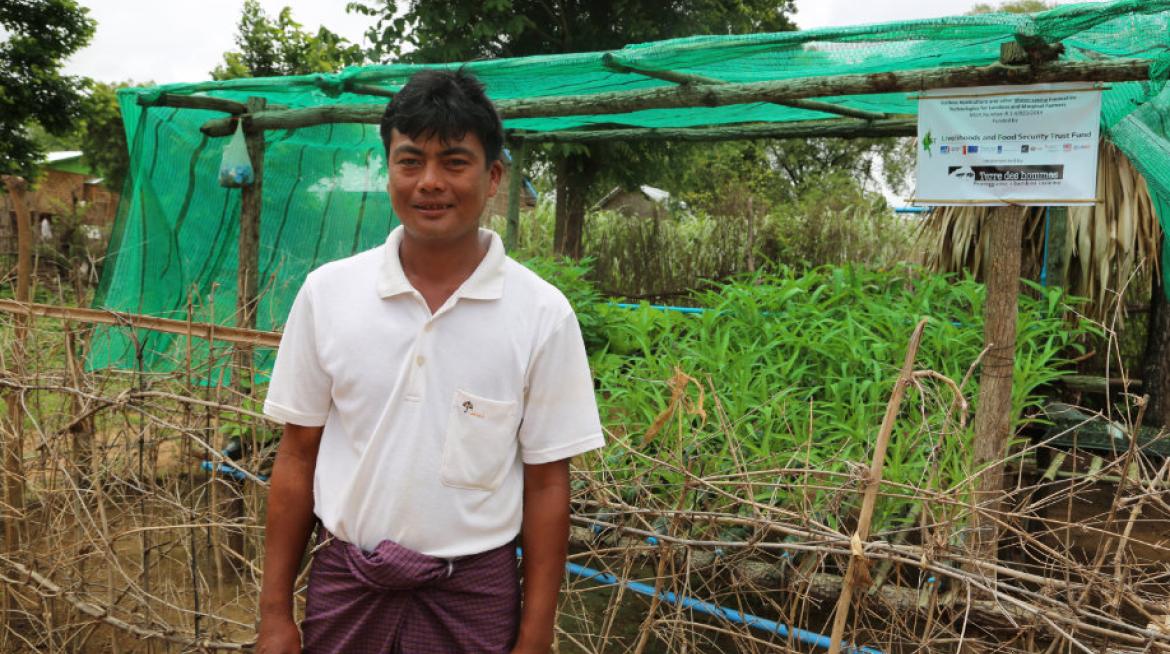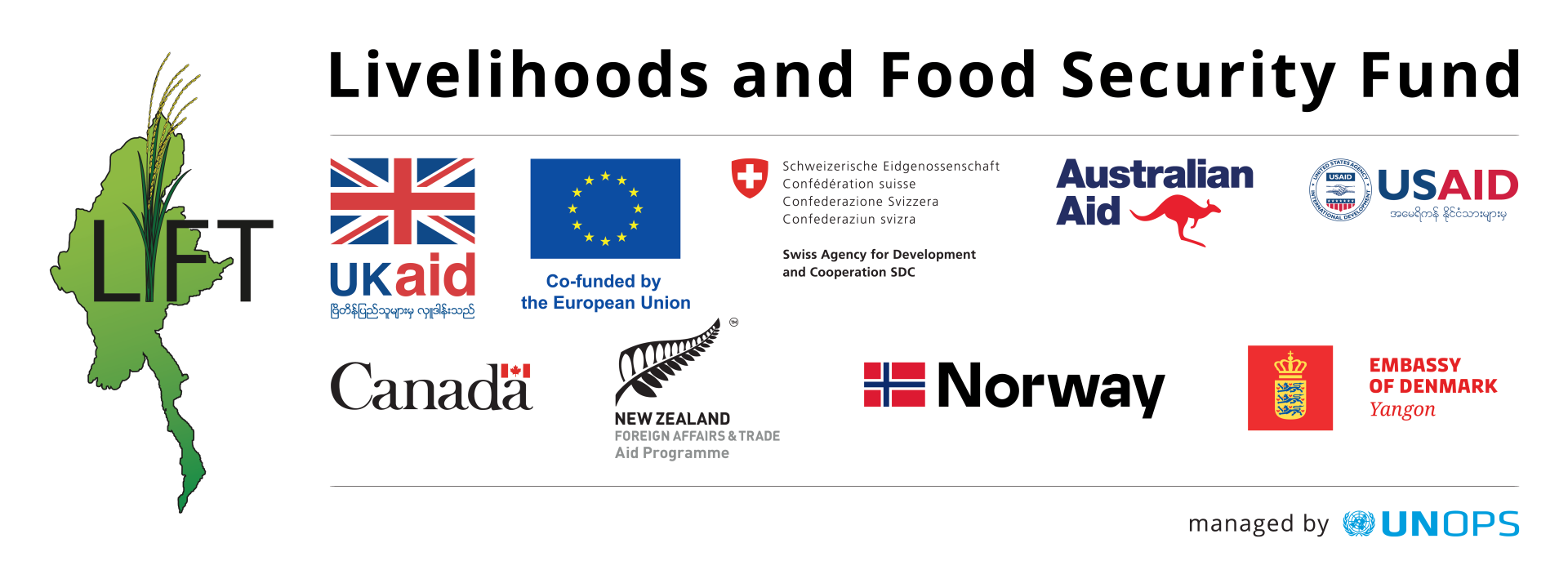
Since February this year, LIFT partner Terre des Hommes (TDH) has been introducing simplified hydroponic horticulture and other innovative water saving technologies to remote villages in the Dry Zone. Landless people and marginal farmers are piloting these, with promising results. In one village alone, 27 hydroponic greenhouses have sprouted up, providing nutritious vegetables for home consumption and for sale. “I had no idea that this would work so well, so fast,” said U Ye Winn (pictured above), who reports saving around 20,000 MMK (or $20) per month by feeding his family home grown vegetables.
-------------
Agronomist Nicola Michelon arrived in Myanmar in 2013 after spending three years in Brazil, where he was gainfully involved in promoting hydroponic vegetable growing. Today he’s front seat of a four-wheel drive as we make slow and bumpy progress towards the remote villages in Natmauk Township (Magway Region) where TDH, the organisation he works with, is introducing the technology to farmers. The road is so bad that an officer from another LIFT partner, the Disabled Peoples Development Organisation, who has joined us to learn about the technology, gets badly car sick.
It’s the tail-end of the rainy season and this pocket of the Dry Zone doesn’t look so dry – recent rains have left sunflower fields in bloom and the entire landscape is surprisingly green. The village we approach also shows an unexpected feature: green nets can be seen next to a large number of houses – these are the ‘greenhouses’ that Nicola and his team have set up to protect the hydroponic vegetable growing plots that they have introduced here.
The Livelihoods and Food Security Trust Fund (LIFT) funds the project – it aligns with LIFT’s aim to improve the nutrition of men, women and children – making them healthier, more receptive to learning and essentially more resilient. It provides a high yielding, water-efficient farming technology – which will show its value during the increasingly long dry season - and it also allows participants to save money through home consumption of the vegetables, and to raise their incomes by selling excess produce.
The simplified hydroponic systems use locally available materials: one litre plastic bottles (a village clean-up is arranged first to collect these from rubbish piles) that are placed in line on a 24 degree slope to allow dripping nutrient solution to pass down from one bottle to the next. The solution is gathered at the base of the structure and reintroduced once again at the top, allowing savings in water and solution. The ‘soil’ is carbonized rice husk, and local wood is used to form the structure. These can be set up in 3 metre by 2 metre plots in small compounds and the larger 3 metre by 6 metre version (shared by two families) can manage more than 400 plants.
At the outset, the project provides good seeds, and encourages the use of local variety seeds and seed germination for sustainability. Crops that grow well in this system include salads, mustard, morning glory, mint, amaranth, tomato, cucumber and roselli.
Introducing technology like this is not easy, says Nicola. Champions need to be found and local adaptations made. TDH works with Yezin Agricultural University in Magway to adapt the technology for local conditions and to introduce students to its possibilities. TDH has also introduced drip technology to these villages, based on an innovative model first tried and tested by another LIFT partner, Proximity Designs.
And champions have emerged. Sixty-year old U Aung Myint is satisfied with his drip irrigation plot. “It saves me a lot of time,” he says, “and the vegetables are good quality and tasty.” Since his plot is close to the road, neighbours, traders and passers-by come to have a closer look. The availability and variety of nutrient-rich vegetables in these difficult-to-reach villages has surged, and LIFT partner LEARN has come in to share knowledge on nutrition through cooking demonstrations.
While the project is still in its early days, it shows good potential for replication in other areas – peri-urban situations, for example, where there hydroponic systems could operate on small plots, and access to markets is easier (in Brazil the systems proved to be successful in small yards, on terraces and rooftops).
In the Dry Zone, over the coming months 45 village extension workers will be trained to guide in the farmers in situ. A Burmese language manual for plot management is in development. Nicola and his team continue to work with Yezin University to hone the technology to local conditions.
“Further studies are required to match yield and quality improvement, and water use efficiency,” says Nicola. ‘We may also look into cultivars and nutrient solution composition.”
“The big thing is to ensure that the project is sustainable. The technology has been embraced – the farmers are entrepreneurs who just need opportunity, and better access to market would help them too.”


